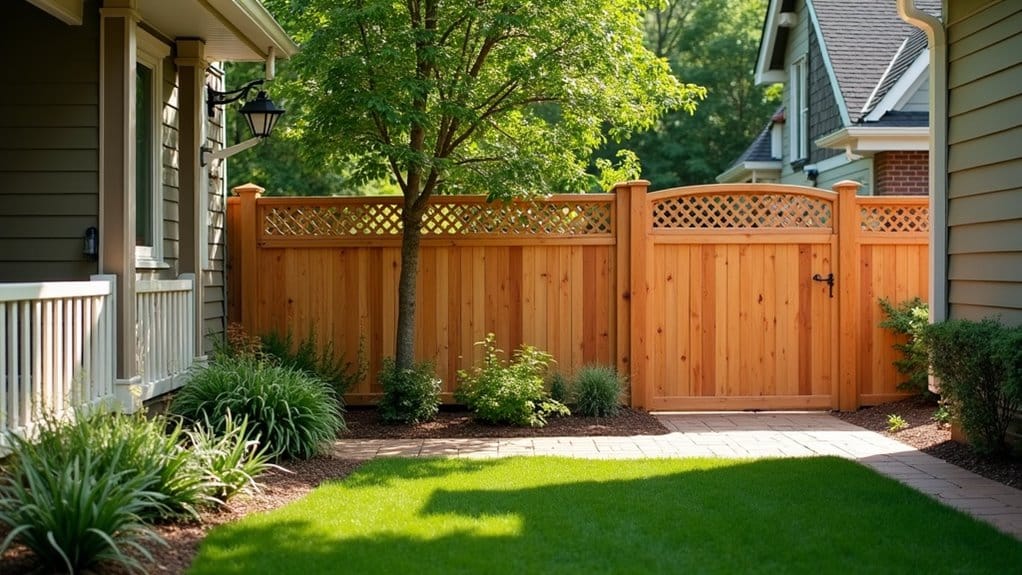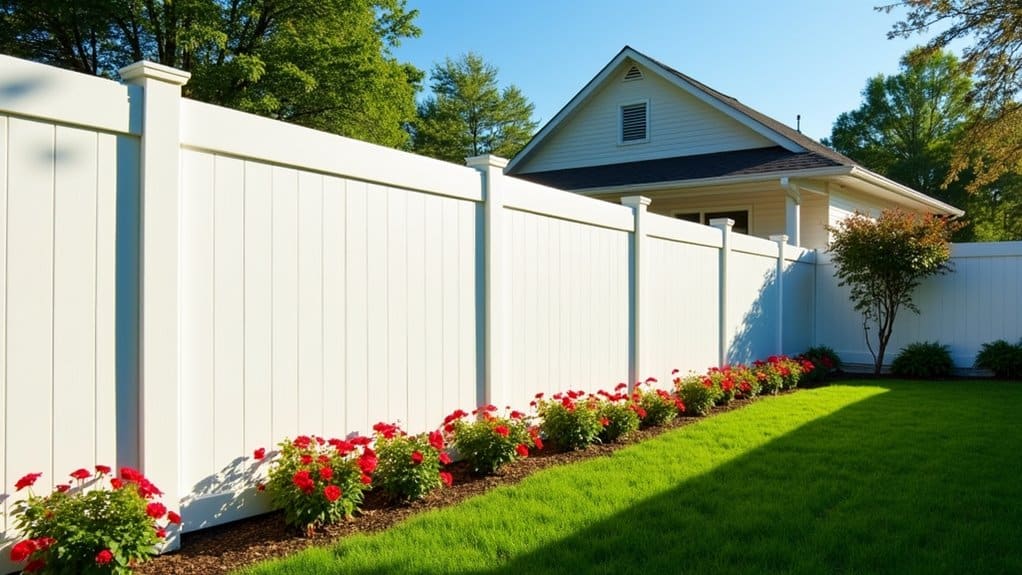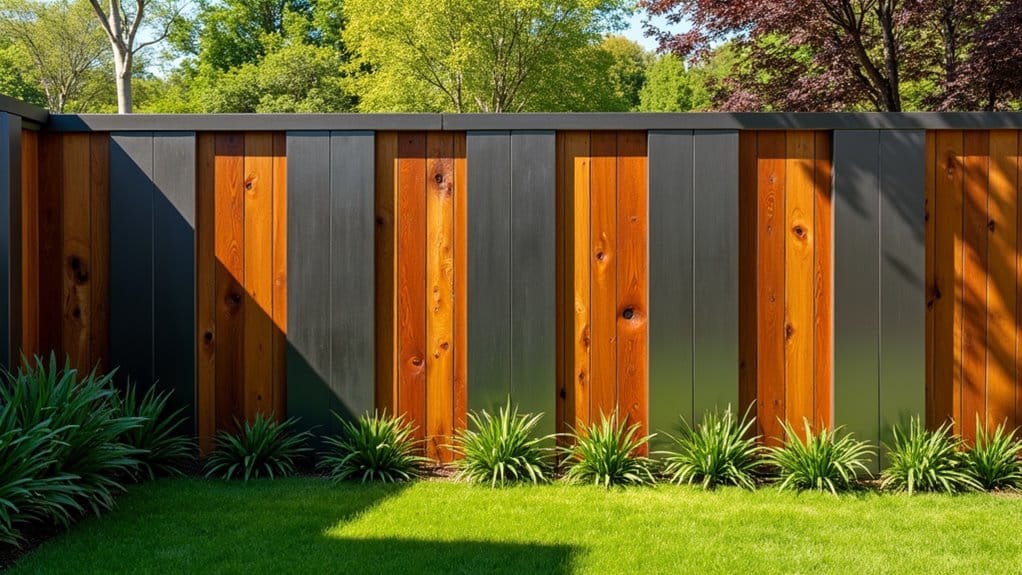Recycled materials in fencing offer eco-friendly choices that boost your property’s value and cut down on waste. Using recycled plastic or composite materials means you get durable fencing that requires little maintenance. These options are not only resource-conscious but also visually appealing, supporting sustainability efforts. Plus, you might find government incentives that make these materials more affordable. Interested in the best options and trends? Keep looking into eco-friendly fencing solutions.
Key Takeaways
Recycled fencing materials, like HDPE and composite lumber, are durable and eco-friendly, helping to reduce waste. Using reclaimed wood or aluminum not only supports sustainability but also adds unique character to properties.
Advancements in manufacturing, such as energy-efficient processes and better sorting methods, enhance the quality and environmental benefits of recycled fencing. Plus, these materials require little maintenance, which can save you money in the long run and promote a circular economy by reusing resources.
Choosing recycled fencing also aligns with sustainability goals, making your property more appealing to eco-conscious buyers and potentially increasing its value.
The Growing Demand for Recycled Materials in Fencing

The demand for recycled materials in fencing is on the rise as sustainability becomes a priority for consumers. More people are choosing eco-friendly options, and governments are supporting this shift with incentives for recycling. Innovative materials like advanced composites and recycled metals aren’t only durable but also minimize environmental impact. The plastic fencing market is expected to reach $8.41 billion by 2031, indicating that using recycled materials can attract customers and give companies a competitive advantage. This growth is driven by demand from residential and commercial construction industries, highlighting the importance of incorporating sustainable practices in fencing solutions. Adopting these trends keeps you at the cutting edge of sustainable fencing solutions.
Key Benefits of Recycled Plastic Fencing
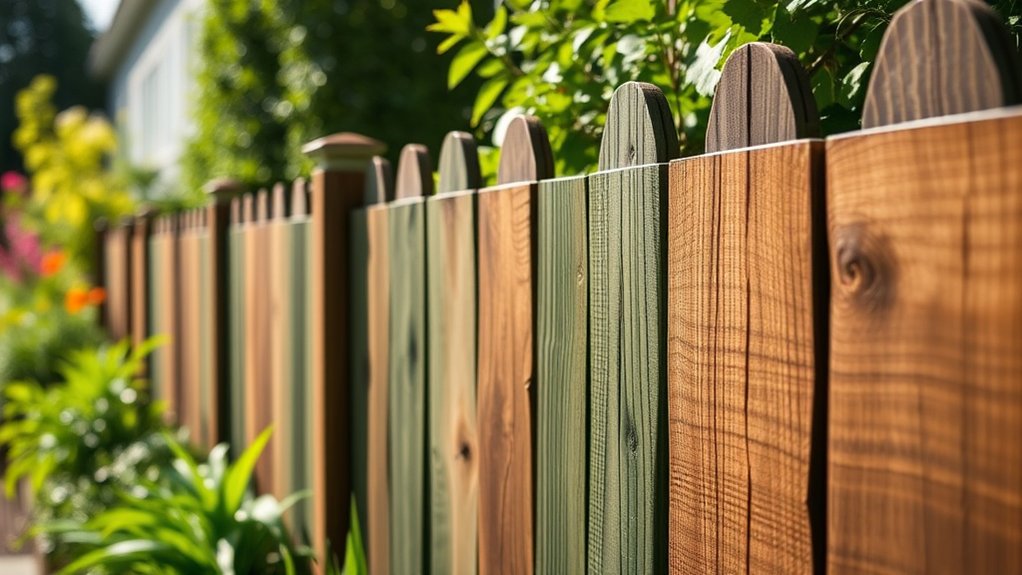
Choosing recycled plastic fencing is a smart investment for both your property and the environment. It helps reduce waste and lowers maintenance costs, saving you money in the long run. With minimal upkeep required, you can enjoy an attractive, durable fence without the hassle of constant repairs. Additionally, the production of composite fencing emits fewer greenhouse gases compared to wood fencing, benefiting the planet.
Long-lasting Durability
Recycled plastic fencing offers impressive durability, making it an excellent long-term investment. Unlike traditional wood, it requires minimal maintenance since it won’t rot, decay, or attract insects. You won’t need to treat or repaint it regularly. Designed to withstand water and harsh weather, it outlasts wood and often matches or surpasses composite fencing in lifespan. Additionally, the production of wood fencing requires minimal processing and low energy input, making it a more environmentally friendly option.
Environmental Impact Reduction
Choosing recycled plastic fencing benefits both your property and the environment. By helping to divert billions of plastic containers from landfills each year, you support a circular economy that repurposes waste.
This significantly reduces your carbon footprint since manufacturing recycled fencing produces fewer greenhouse gases than traditional materials. Additionally, it conserves resources by reusing plastics that would otherwise require oil to produce, helping to protect our forests.
Growing consumer awareness of these benefits is driving industry changes and influencing policies for more sustainable practices. Opting for recycled fencing is a clear way to show your commitment to environmental responsibility.
Cost-effective Maintenance Solutions
Recycled plastic fencing offers remarkable durability, outlasting traditional materials like wood. This means fewer replacements and less hassle for you.
With minimal maintenance, there’s no need for regular treatments or painting—just a quick hose rinse to keep it clean.
While the upfront cost may be higher, the savings on maintenance and labor over time make it a wise investment.
Plus, it boosts your property’s value.
Choose recycled plastic fencing for an affordable, low-maintenance solution that pays off in the long run.
Environmental Impact: Comparing Plastic and Wood
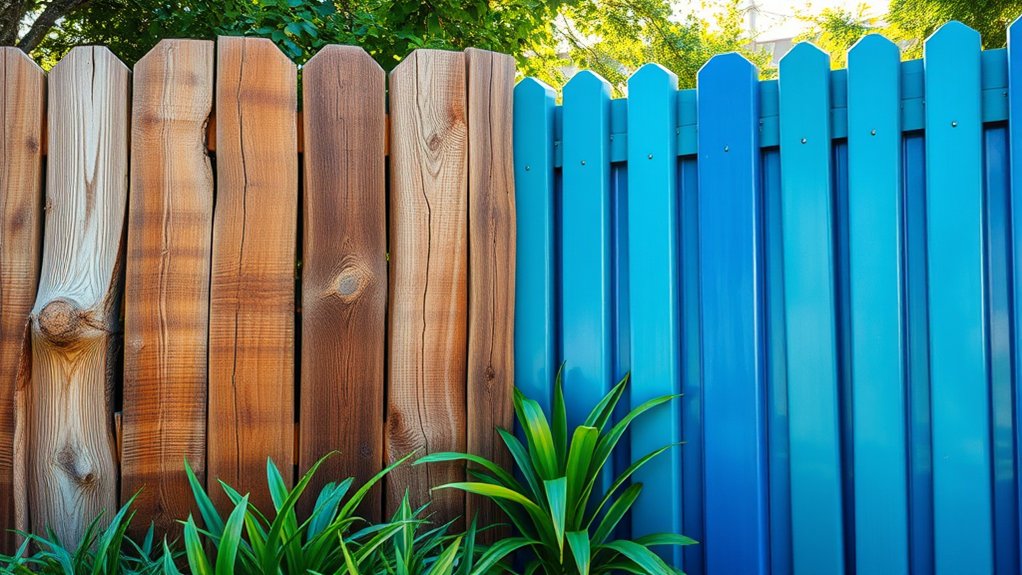
When choosing fencing, it’s important to consider the environmental impact of plastic versus wood.
Look at the carbon footprint of each material, their effects on resource conservation, and waste management.
For example, while wood is renewable, plastic can take hundreds of years to decompose.
Carbon Footprint Analysis
When comparing wood and plastic fencing, their environmental impacts vary significantly.
Sustainably sourced wood can be carbon neutral and even absorb carbon during its growth, making it a strong eco-friendly option.
On the other hand, composite fencing has a larger carbon footprint due to its energy-intensive production.
Vinyl fencing is durable, but its production relies on fossil fuels, leading to higher emissions.
Additionally, materials like vinyl and composites are non-biodegradable, creating disposal issues.
Opting for wood or recycled composite fencing can effectively lower your carbon footprint and support sustainable practices. Furthermore, selecting aesthetic versatility in fencing options can enhance your outdoor space while being environmentally considerate.
Resource Conservation Strategies
When choosing fencing, consider resource conservation strategies that assess the environmental impact of wood versus plastic.
Wood is renewable and biodegradable but often treated with harmful chemicals and has a shorter lifespan, which can increase resource use over time.
On the other hand, composite fencing uses recycled materials, keeping waste out of landfills and reducing the need for new resources.
While composites aren’t biodegradable, their durability means they need to be replaced less often. Additionally, PVC fences can last over 50 years, offering a long-term solution that supports sustainability.
By opting for eco-friendly composite fencing, you support a sustainable approach that balances durability with environmental responsibility.
Make choices that are good for your property and the planet.
Waste Management Comparison
When choosing between wood and plastic fencing, consider their waste management impacts.
Wood is biodegradable and decomposes naturally, which reduces landfill waste. However, it has a shorter lifespan, leading to more frequent replacements and disposal issues.
In contrast, vinyl fencing is made from PVC, which isn’t biodegradable and can contribute to long-lasting waste unless recycled. Many manufacturers offer recycling programs to help manage this plastic waste. Additionally, lower environmental impact of PVC due to its recyclability makes it a more sustainable option in the long run.
Composite fencing uses recycled materials but can be challenging to dispose of due to its mixed composition.
Types of Recycled Materials Utilized in Fencing
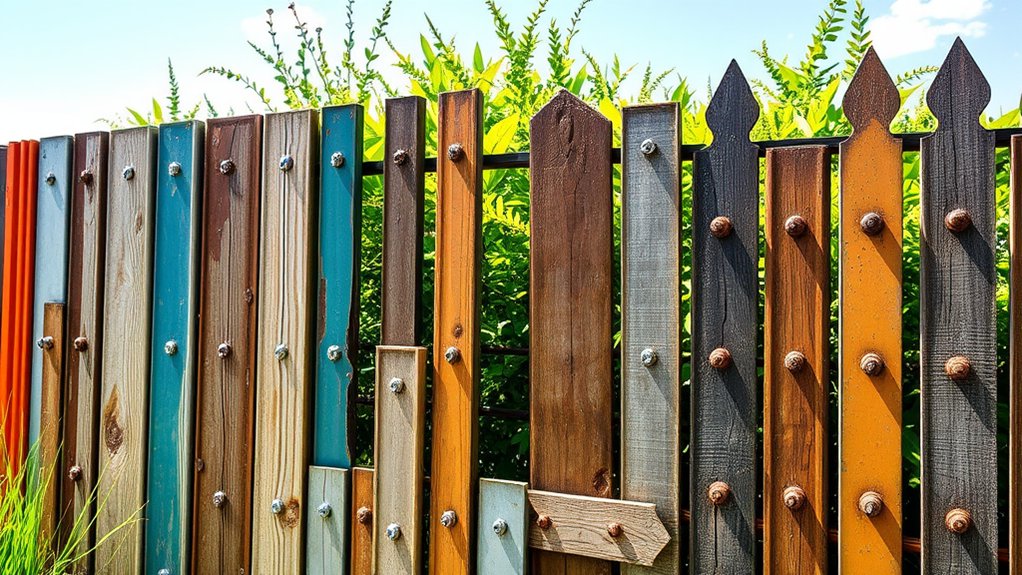
When exploring sustainable fencing options, you have several recycled materials to choose from that not only protect your property but also help the environment.
Here are three top picks:
1. Wood: Consider using reclaimed barn wood for its rustic appeal or pallet wood for easy installation.
Treated wood is durable, while demolition lumber adds a unique, weathered character.
2. Metal: Aluminum is lightweight and rust-resistant, making it a practical choice.
Steel offers great strength, and corrugated metal can give your yard a modern edge.
3. Plastic: HDPE lumber requires very little maintenance, and composite fencing combines wood and plastic for a stylish look.
For something different, think about creative options like bottle cap fences or woven hurdles for a unique touch.
Innovations in the Manufacturing Process

Recycled materials are a solid choice for sustainable fencing, and recent innovations in their manufacturing are making them even better.
New automated systems help manufacturers sort and identify high-quality recycled plastics and wood fibers quickly. Energy-efficient production methods and water-based adhesives lower environmental impact. Co-extrusion techniques boost durability, resulting in weather-resistant fencing that also looks appealing.
By following industry best practices, companies are constantly improving sustainable sourcing and product performance. Through ongoing research and development, they’re creating safer and more eco-friendly fencing solutions.
Choosing recycled fencing not only enhances your property but also supports a sustainable future.
Market Trends in Recycled Fencing Solutions
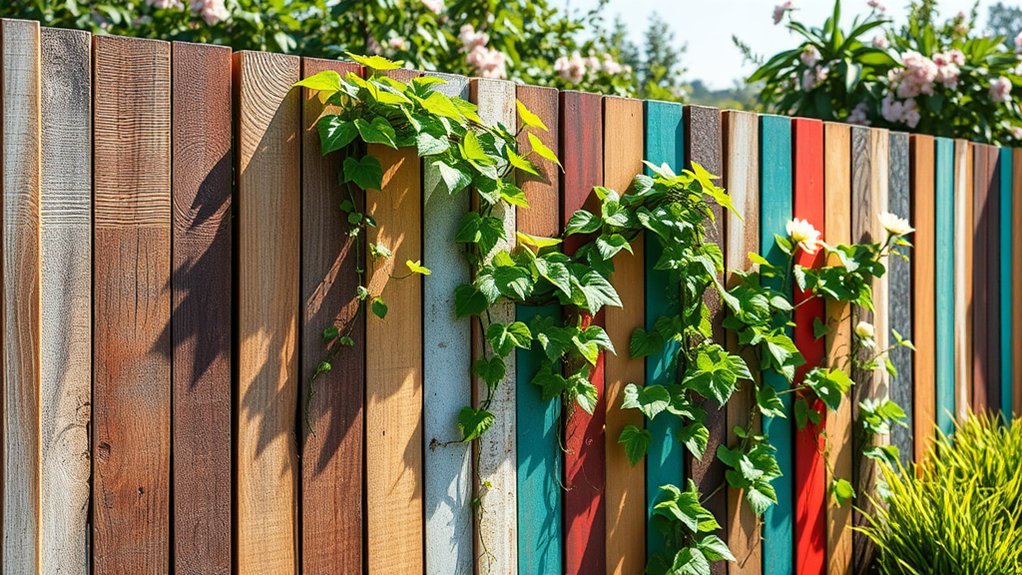
As more consumers prioritize sustainability, the market for recycled fencing solutions is on the rise.
Here are three key trends driving this demand:
- Recycled Plastics: These materials reduce costs and improve the look of fencing, making them a popular choice.
- Government Incentives: Supportive policies help companies comply with regulations and appeal to eco-conscious buyers.
- Technological Advances: Better recycling processes are producing higher-quality fencing materials, broadening their use.
With the global fencing market set for growth, adopting these sustainable options means you’re not just making a stylish choice but also a responsible one.
Eco-friendly fencing is quickly becoming the norm in the industry.
Future Outlook for Sustainable Fencing Products
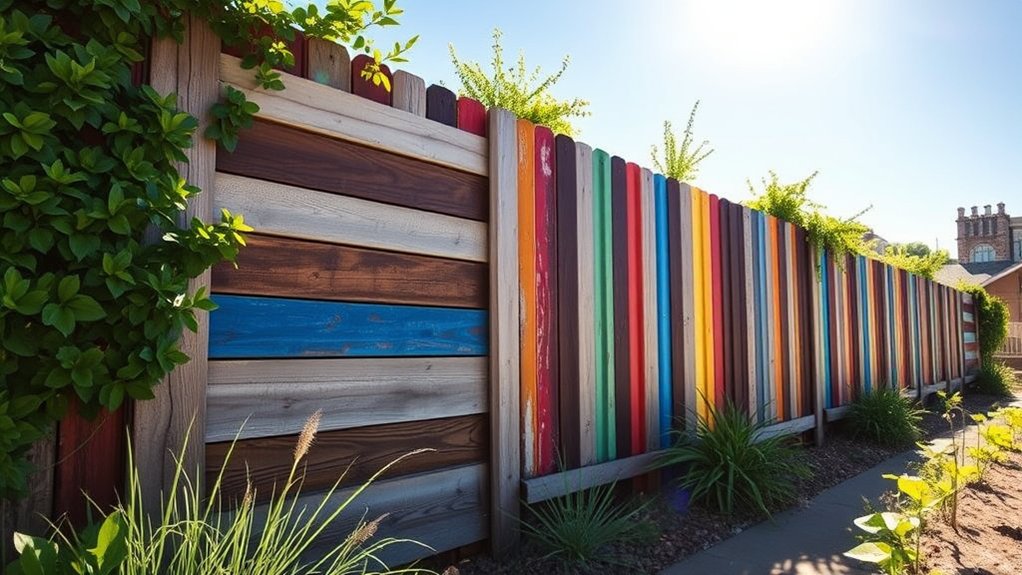
The future of fencing is becoming increasingly sustainable, driven by innovative materials and technologies. As consumers lean towards eco-friendly choices, new advancements are improving both the appeal and functionality of fencing products.
| Material | Benefits |
|---|---|
| Recycled Wood Composites | Durable and environmentally friendly |
| Bamboo | A fast-growing, renewable resource |
| Reclaimed Metals | Strong and reduces the need for new materials |
| Smart Technology Integration | Increases security and convenience |
With these evolving options, fencing is not just about boundaries anymore; it’s about making responsible choices for our environment.
Cost-Effectiveness of Recycled Fencing Options

When choosing fencing options, consider recycled materials. They not only help the environment but can also save you money.
Here are three reasons why recycled fencing is a smart financial choice:
- Long-Term Savings: Initial costs may be higher, but materials like Trex and HDPE require less maintenance, leading to savings over time.
- Durability: Recycled fencing withstands weather and pests better, reducing the need for replacements.
- Less Maintenance: You’ll spend less time and money on staining, sealing, or painting, which lowers overall costs.
Overall, recycled fencing offers a great return on investment, making it a wise option for your budget and the planet.
Choose sustainability without compromising on quality or finances!
Adapting Recycled Fencing for Various Applications
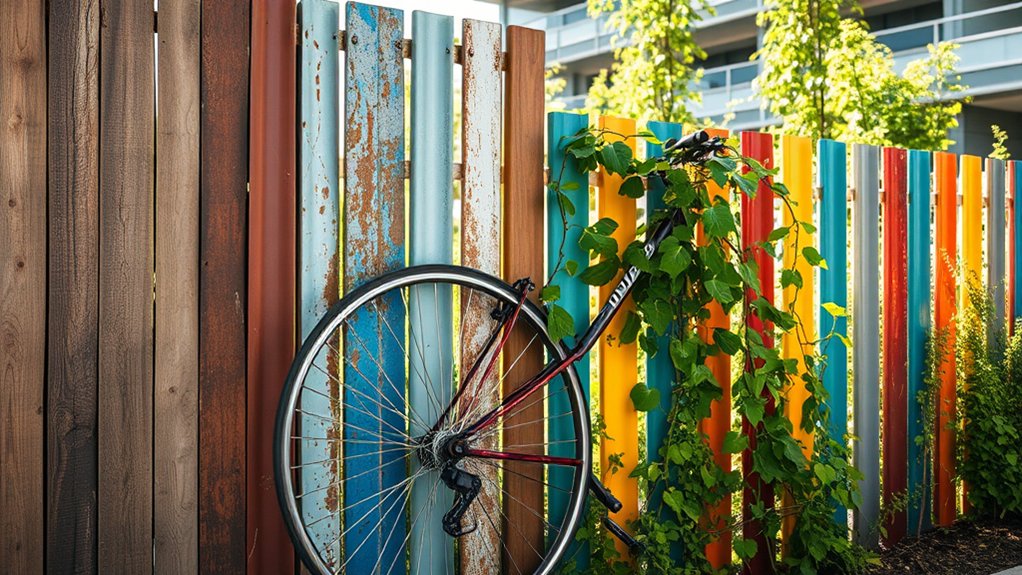
Recycled fencing materials are a sustainable and versatile choice for various applications. High-density polyethylene (HDPE) lumber can mimic the look of wood, while old doors and pallets can be transformed into unique designs.
For commercial spaces, plastic lumber is durable and customizable, ideal for branding and eco-friendly initiatives. In agriculture, recycled fencing offers weather and pest resistance without harmful chemicals.
Frequently Asked Questions
How Does Recycled Plastic Fencing Compare in Appearance to Traditional Wood Fencing?
Recycled plastic fencing has a sleek and uniform appearance, while traditional wood boasts natural texture and charm. If you prefer a polished look, go for plastic; if you like the warmth of wood, that’s the way to go. Your choice should reflect your style and how much maintenance you’re willing to do.
Can Recycled Fencing Materials Be Painted or Stained?
Yes, you can paint or stain recycled fencing materials. Just ensure you prepare the surface properly. This allows you to choose from various colors to enhance both the look and durability of your fence.
What Is the Lifespan of Recycled Plastic Fencing?
Recycled plastic fencing lasts over 30 years due to its strong resistance to rot and pests. It’s a great choice for your property and helps the environment by cutting down on waste.
Are There Any Warranties Available for Recycled Fencing Products?
Warranties for recycled fencing products act as a safety net, providing protection for your investment. Many of these products come with solid warranties and guarantees that can last over ten years, ensuring you’re covered if something goes wrong.
How Do I Properly Maintain Recycled Plastic Fencing?
To maintain your recycled plastic fencing, follow these simple steps:
- Clean Regularly: Use warm soapy water to wipe it down.
- Tackle Tough Grime: For stubborn dirt, opt for gentle cleaning methods like a soft brush.
- Inspect for Damage: Check twice a year for any wear or issues to ensure it lasts.
Conclusion
When choosing fencing, consider recycled materials. They’re eco-friendly and practical; for example, recycled plastic fencing can last up to five times longer than traditional wood, meaning fewer replacements. By opting for recycled options, you save money over time and help the environment. It’s a smart choice that enhances your property while supporting sustainability.


